Bài giảng Nghệ thuật lãnh đạo - Chapter 4: Participative Management and Leading Teams
Purpose
After studying this chapter, you will be able to:
Specify the elements of effective delegation
Clarify the role of leadership in self-managed teams
Explain the principles of self-leadership

Trang 1
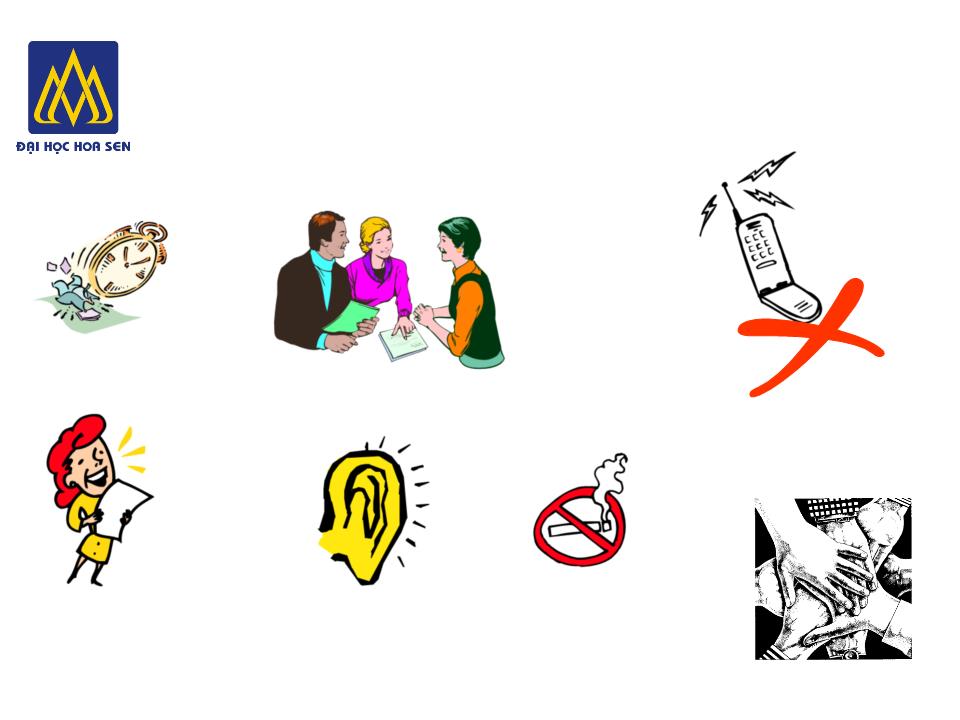
Trang 2

Trang 3

Trang 4
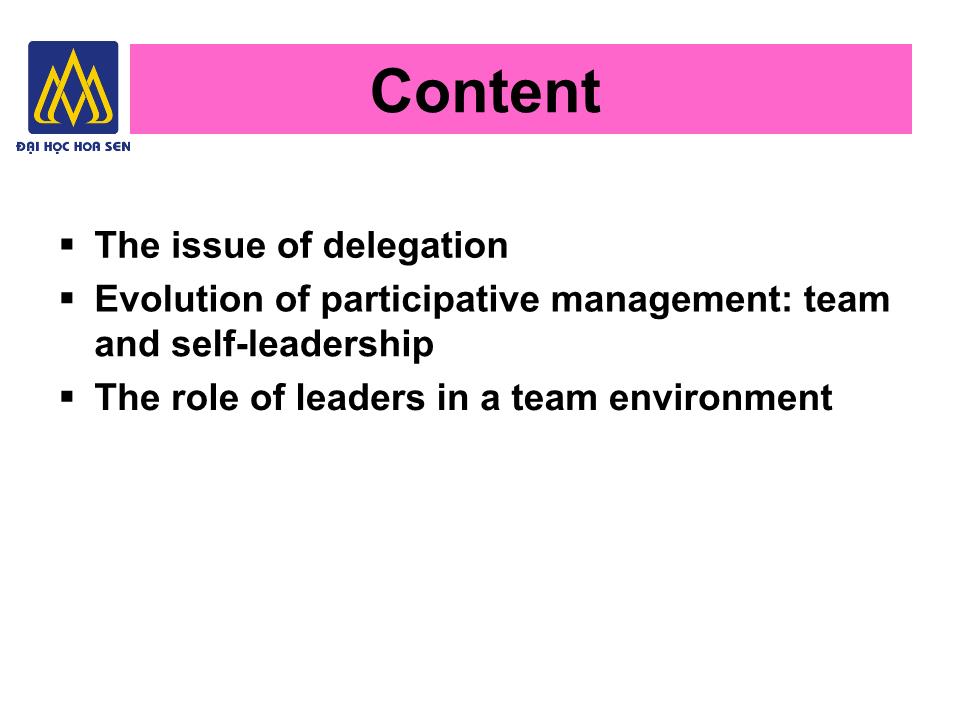
Trang 5
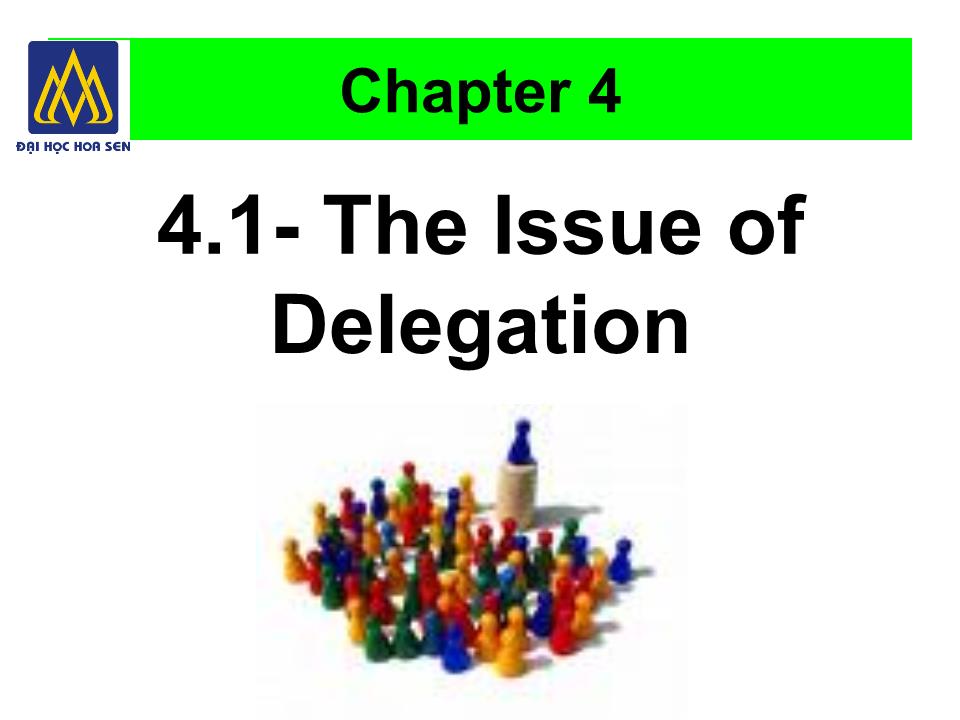
Trang 6
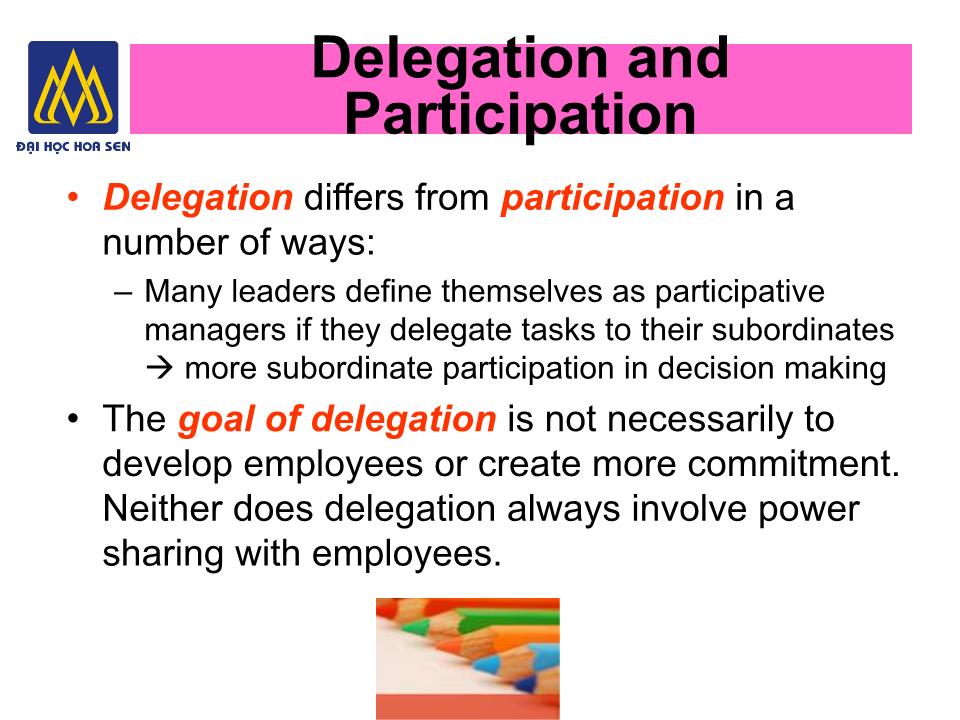
Trang 7
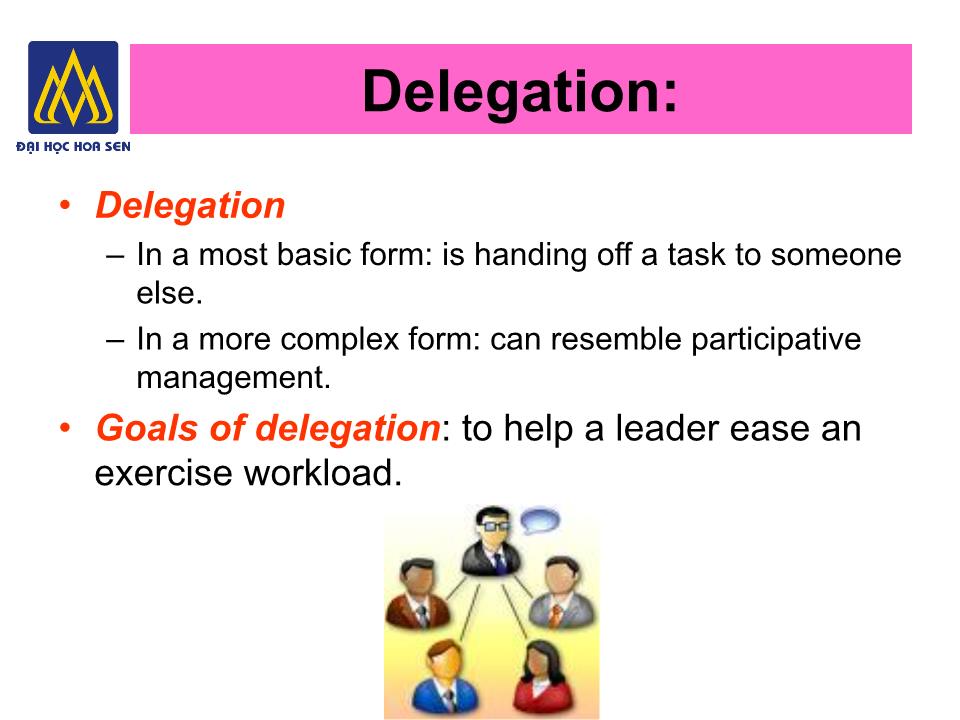
Trang 8
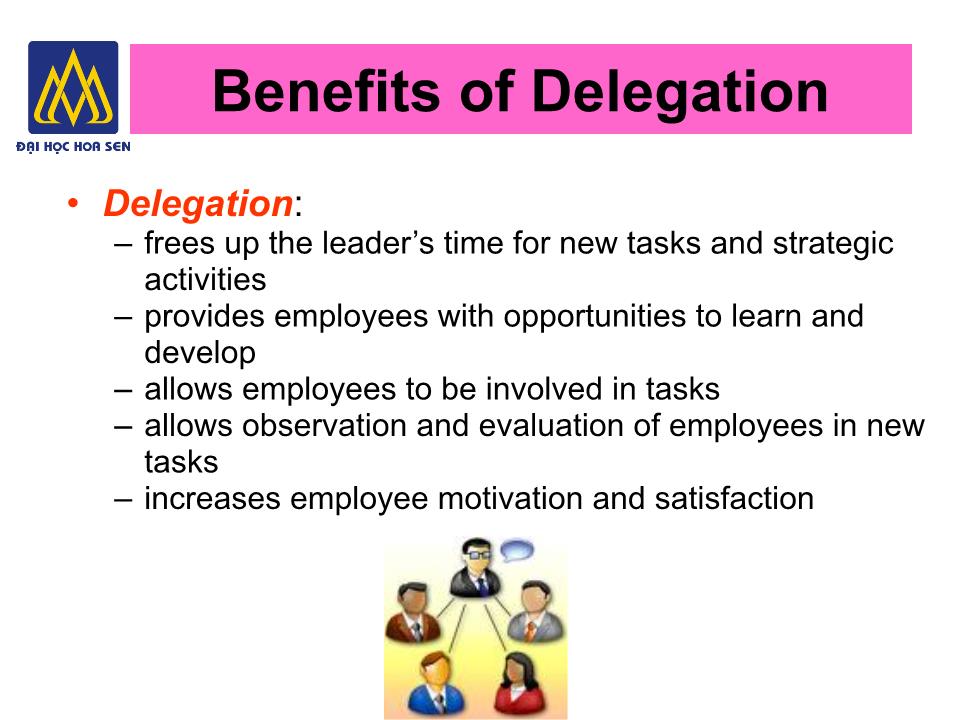
Trang 9

Trang 10
Tải về để xem bản đầy đủ
Bạn đang xem 10 trang mẫu của tài liệu "Bài giảng Nghệ thuật lãnh đạo - Chapter 4: Participative Management and Leading Teams", để tải tài liệu gốc về máy hãy click vào nút Download ở trên
Tóm tắt nội dung tài liệu: Bài giảng Nghệ thuật lãnh đạo - Chapter 4: Participative Management and Leading Teams

NGHỆ THUẬT LÃNH ĐẠO MSMH: NS301DV01 Chapter 4: Participative Management and Leading Teams Purpose After studying this chapter, you will be able to : Specify the elements of effective delegation Clarify the role of leadership in self-managed teams Explain the principles of self-leadership Content The issue of delegation Evolution of participative management: team and self-leadership The role of leaders in a team environment Chapter 4 4.1- The Issue of Delegation Delegation and Participation Delegation differs from participation in a number of ways: Many leaders define themselves as participative managers if they delegate tasks to their subordinates more subordinate participation in decision making The goal of delegation is not necessarily to develop employees or create more commitment. Neither does delegation always involve power sharing with employees. Delegation: Delegation In a most basic form: is handing off a task to someone else. In a more complex form: can resemble participative management. Goals of delegation : to help a leader ease an exercise workload. Benefits of Delegation Delegation : frees up the leader’s time for new tasks and strategic activities provides employees with opportunities to learn and develop allows employees to be involved in tasks allows observation and evaluation of employees in new tasks increases employee motivation and satisfaction Guidelines for Good Delegation Guideline Description Delegate, do not dump Delegate both pleasant and unpleasant tasks; provide followers with a variety of experiences Clarify goals and expectations Provide clear goals and guidelines regarding expectations and limitations Provide support and authority As a task is delegated, provide necessary authority and resources, such as time, training, and advice needed to complete the task. Monitor and provide feedback Keep track of progress and provide feedback during and after task completion at regular intervals. Guidelines for Good Delegation Guideline Description Delegate to different followers Delegate tasks to those who are most motivated to complete them as well as those who have potential but no clear track record of performance. Create a safe environment Encourage experimentation; tolerate honest mistakes and worthy efforts that may fail. Develop your own coaching skills Take workshops and training classes to assure that you have the skills to delegate. Why Do Leaders Fail to Delegate? The most commonly used argument against delegation is “ I will get it done better and faster myself ” Excuses for not delegating Excuses Counterarguments My followers are not ready The leader’s j is to get followers prepared to take on new tasks. My subordinates do not have the necessary skills and knowledge The leader’s responsibility is to train followers and prepare them for new challenges. I feel uncomfortable asking my followers to do many of my tasks Only a few tasks cannot be delegated. Balancing delegation of pleasant and unpleasant tasks is appropriate. Excuses for not delegating Excuses Counterarguments I can do the j quicker myself Taking time to train followers frees up time in the long run. Followers are too busy Leaders and followers must learn to manage their workload by setting priorities. If followers make a mistake, I am responsible Encouraging experimentation and tolerating mistakes are essential to learning and development. My own manager may think I am not working hard Doing busy work is not an appropriate use of a leader’s time. Delegation allows time to focus on strategic and higher-level activities. Chapter 4 4.2- Evolution of Participative Management: Team and Self-leadership Criteria for Use of Participative Management Criteria Description When the task is complex and multifaceted and quality is important Complex tasks require input from people with different expertise; people with different point of view are more likely to deliver a quality decision. When follower commitment is needed in successful implementation Follower participation increases commitment and motivation. When there is time Using participation takes time; legitimate deadlines and time pressures preclude seeking extensive participation. Criteria for Use of Participative Management Criteria Description When the leader and followers are ready and the organizational culture is supportive Participation can only succeed if both leader and followers agree to its benefits, are trained in how to use it, and are committed to its success. The organizational culture must encourage or at least tolerate employee participation. When interaction between leader and followers is not restricted by the tasks, the structure, or the environment Participation requires interaction between leader and followers; such interaction is only possible if restrictions because of factors such as geographic location, structural elements, or task requirements are minimized. Groups A collection of two or more interacting individuals who maintain stable patterns of relationships, share common goals, and perceive themselves as being a group. Groups Teams Team A group whose members have complementary skills and are committed to a common purpose or set of performance goals for which they hold themselves mutually accountable. Groups and Teams While groups and teams both involve people working together toward a goal, they differ along several dimensions. Synergy means that team members together achieve more than each individual is capable of doing. Whereas group members combine their efforts to achieve their goals, teams reach higher performance levels. Groups vs. Teams Groups Teams Members work on a common goal Members are accountable to manager Members do not have clear stable culture and conflict is frequent Leadership is assigned to single person Groups may accomplish their goals Members are fully committed to common goals and a mission they developed Members mutually accountable to one another Members trust one another and team enjoys a collaborative culture Members all share in leadership Teams achieve synergy: 2 + 2 = 5 Groups vs. Teams Self-Managed Teams (SMT) Where as traditional managers and leaders are expected to provide command and control , the role of leaders in teams is to facilitate processes and support team members . The leader sets the general direction and goals; the team members make all other decisions and implement them. The new role for leaders is most obvious in SMTs, which are teams of employees with full managerial control over their own work. Self-Managed Teams vs. Traditional Work Groups Characteristics of SMTs Power to manage their work . SMTs can set goals, plan, staff, schedule, monitor quality, and implement decisions. Members with different expertise and functional experience . Team members can be from marketing, finance, production, design, and so on. Without a broad range of experience, the team cannot manage all aspects of its work. Absence of an outside manager . The team does not report to an outside manager. Team members manage themselves, their budget and their task through shared leadership. The power to implement decisions . Team members have the power and the resources necessary to implement their decisions. Characteristics of SMTs Coordination and cooperation with other teams and individuals affected by the teams’ decisions . Because each team is independent and does not formally report to a manager, the teams themselves rather than managers must coordinate their tasks and activities to assure integration. Team leadership based on facilitation . Leadership often rotates among members depending on each member’s expertise in handling a specific situation. Instead of a leader who tells others what to do, sets goals, or monitor achievement; team leader remove obstacles for the team and make sure that the team has the resources it needs. The primary role of the team leader is to facilitate rather than control. Facilitation means that the leader focuses on freeing the team from obstacles to allow it to reach the goals it has set. Helping Teams Become Effective Several factors can help make teams effective. Teams must be created with a real and challenging purpose in mind, be empowered to take action, and have the right amount and type of support. Teams often need specialized support and interventions to develop synergy. Helping Teams Become Effective Possible team-training activities: Team building to clarify team goals, and member roles, and set patterns for acceptable interaction. Cross training to assure that team members understand one another’s tasks. Coordination training to allow the team to work together by improving communication and coordination. Self-guided correction to teach team members to monitor, assess, and correct their behavior in the team. Assertiveness training to help team members express themselves appropriately when making requests, providing feedback, and other interactions among themselves. Self-Leadership Self-leadership is the process of leading people to lead themselves (Manz and Neck, 2004) suggests that team members must be taught and encouraged to make their own decisions and accept responsibility to the point where they no longer need leaders. within teams means that all team members set goals and observe, evaluate, critique, reinforce, and reward one another and themselves. Self-Leadership Self-leaders : Develop positive and motivating though patterns . Individuals and teams seek and develop environments that provide positive cues and a supportive and motivating environment. Set personal goals . Individuals and teams set their own performance goals and performance expectations. Observe their behavior and self-evaluate . Team members observe their own and other team members’ behaviors, and provide feedback and critique, and evaluate one another’s performance. Self-reinforce . Team members provide rewards and support to one another. Self-Leadership Self-Leadership Some of the strategies for the development for self-leaders: Listen more, talk less. Ask questions more than provide answers. Share information rather board it. Encourage independent thinking rather than compliant followership. Encourage creativity rather than conformity. Chapter 4 4.3- The Role of Leaders in a Team Environment The role of leaders in a team environment Questions ?
File đính kèm:
 bai_giang_nghe_thuat_lanh_dao_chapter_4_participative_manage.ppt
bai_giang_nghe_thuat_lanh_dao_chapter_4_participative_manage.ppt

